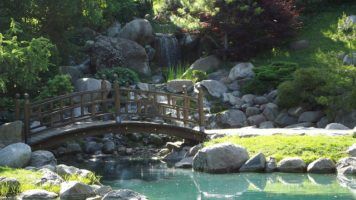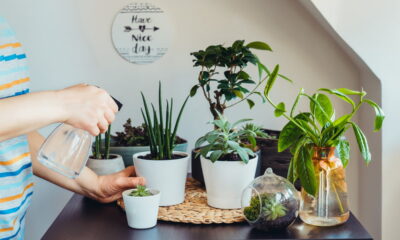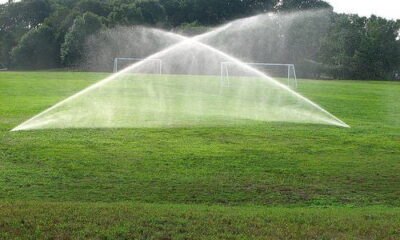

Environment
Healing Gardens Prove Invaluable in Recovery of Thousands
Wherever you look, you can find an inexplicable link between humans and the environments in which we live. Thousands of sick and recovering individuals in hospitals and care facilities all over the country have discovered this firsthand in recent years through the use of healing gardens.
What are Healing Gardens?
The term healing gardens – also known as therapeutic gardens – is applied to gardens and green spaces that are located in or around medical buildings. Specifically, “Therapeutic gardens are found at hospitals, skilled nursing homes, assisted living residences, continuing care retirement communities, cancer centers, and hospice residences,” Family Resource Home Care explains. “Each is designed with such elements as wooded pathways for walking and quiet private sitting areas near a pond or fountain.”
The gardens are designed to be a place where patients, their families, and staff members can retreat for relief of stress, anxiety, and symptoms. It’s also the perfect place for promoting a positive sense of wellbeing and encouragement. Spiritual individuals find healing gardens good for prayer and meditation.
People often ask about the difference between traditional gardens and healing gardens. Generally speaking, the difference is that healing gardens are designed in such a way that everyone can passively enjoy them. From a functional perspective, they typically fit in small spaces and are adapted to the topography of the area. Healing gardens should also be easy to maintain and visually pleasing, which is why simplicity and symmetry are at the heart of most designs.
One of the keys to designing a good healing garden is balancing the ratio of hard spaces and green spaces. According to one expert, the perfect ratio is 7:3 in favor of green spaces. More greenery signals a priority of nature.
The Link Between Humans and Nature
As humans, we’re intrinsically wired to feel a connection with nature. This idea of tapping into nature for healing and well-being has been heavily researched over the years. One recent study shows that 95 percent of people interviewed believe their mood improves after spending time outdoors. They said their mood changes from stressed, depressed, and anxious to more balanced and calm.
One theory – especially in our technologically advanced 21st century – is that time in nature forces us to pay attention to things that we otherwise gloss over when we’re staring at screens. When we’re in nature, our overactive minds get a break and we’re able to slow down and think about the things that truly matter.
While healing gardens are only designed to serve as short respites for patients who are receiving care from medical professionals, some believe nature has the ability to provide long term sustainable healing. Dr. Martha Twaddle, who calls this horticulture therapy, is one such believer.
“Horticulture therapy has the potential to be a powerful adjuvant in the care of the patient receiving palliative-care support,” Dr. Twaddle says. “The engagement of the senses through the immersion in the aesthetics of nature, the therapeutic benefit of physical movement and activity, and the therapeutic guidance to promote reflection and find meaning in the circumstances of illness are among the many benefits.”
Nature-Based Therapy Leads the Way
While you’ll be hard pressed to find traditional medical doctors who prioritize horticulture therapy over traditional medicine-based care, it’s clear that a palpable connection between humans and nature does exist and should be leveraged.
Healing gardens have been around for centuries and it’s great to see them used so extensively in modern medical communities all over the world. While every healing garden is different, the purpose is always the same. The goal is to provide patients with mental and spiritual relief that will hopefully spur physical healing.


 Environment10 months ago
Environment10 months agoAre Polymer Banknotes: an Eco-Friendly Trend or a Groundswell?

 Environment12 months ago
Environment12 months agoEco-Friendly Home Improvements: Top 7 Upgrades for 2025

 Features9 months ago
Features9 months agoEco-Friendly Cryptocurrencies: Sustainable Investment Choices

 Features10 months ago
Features10 months agoEco-Friendly Crypto Traders Must Find the Right Exchange



























